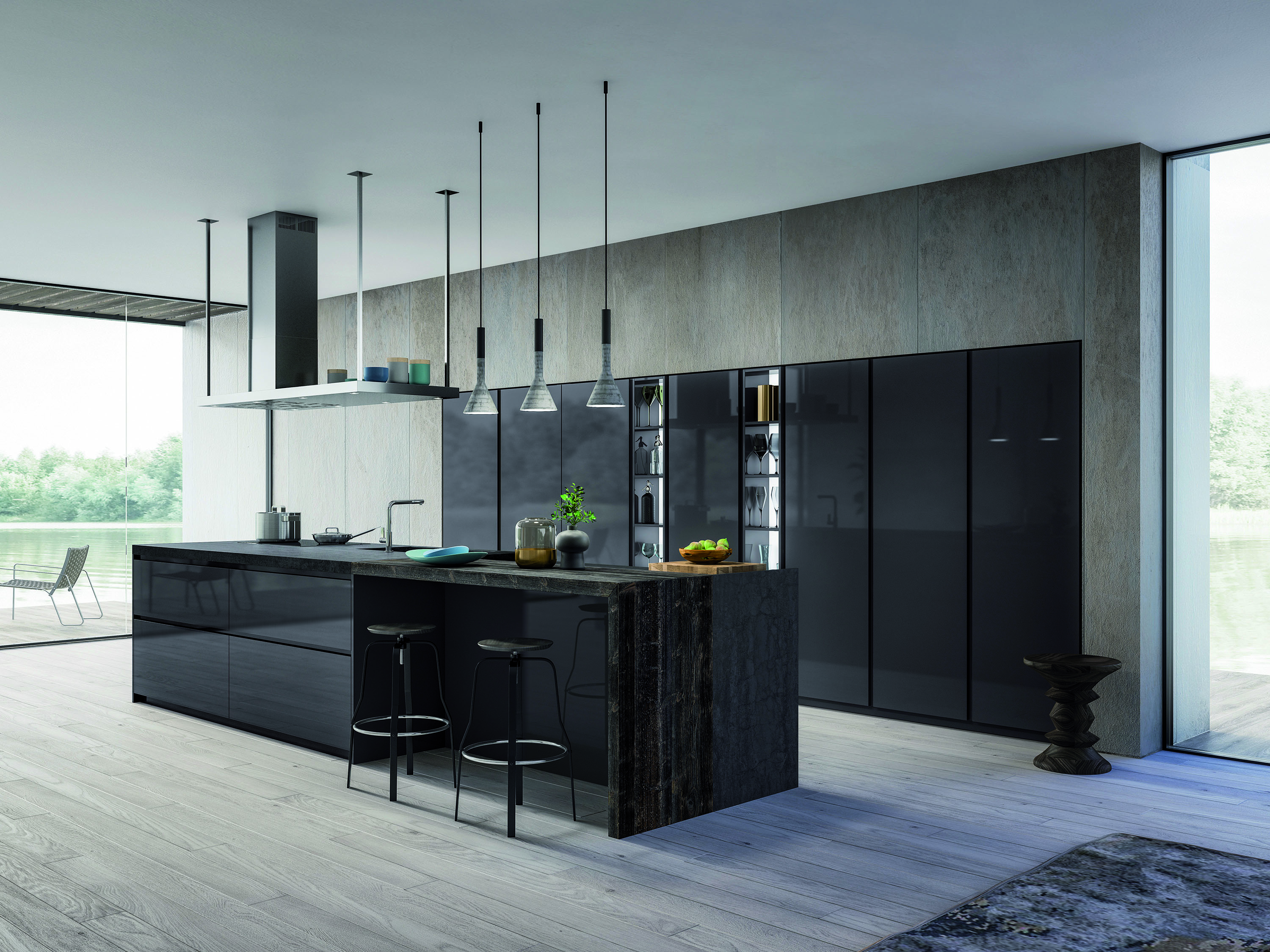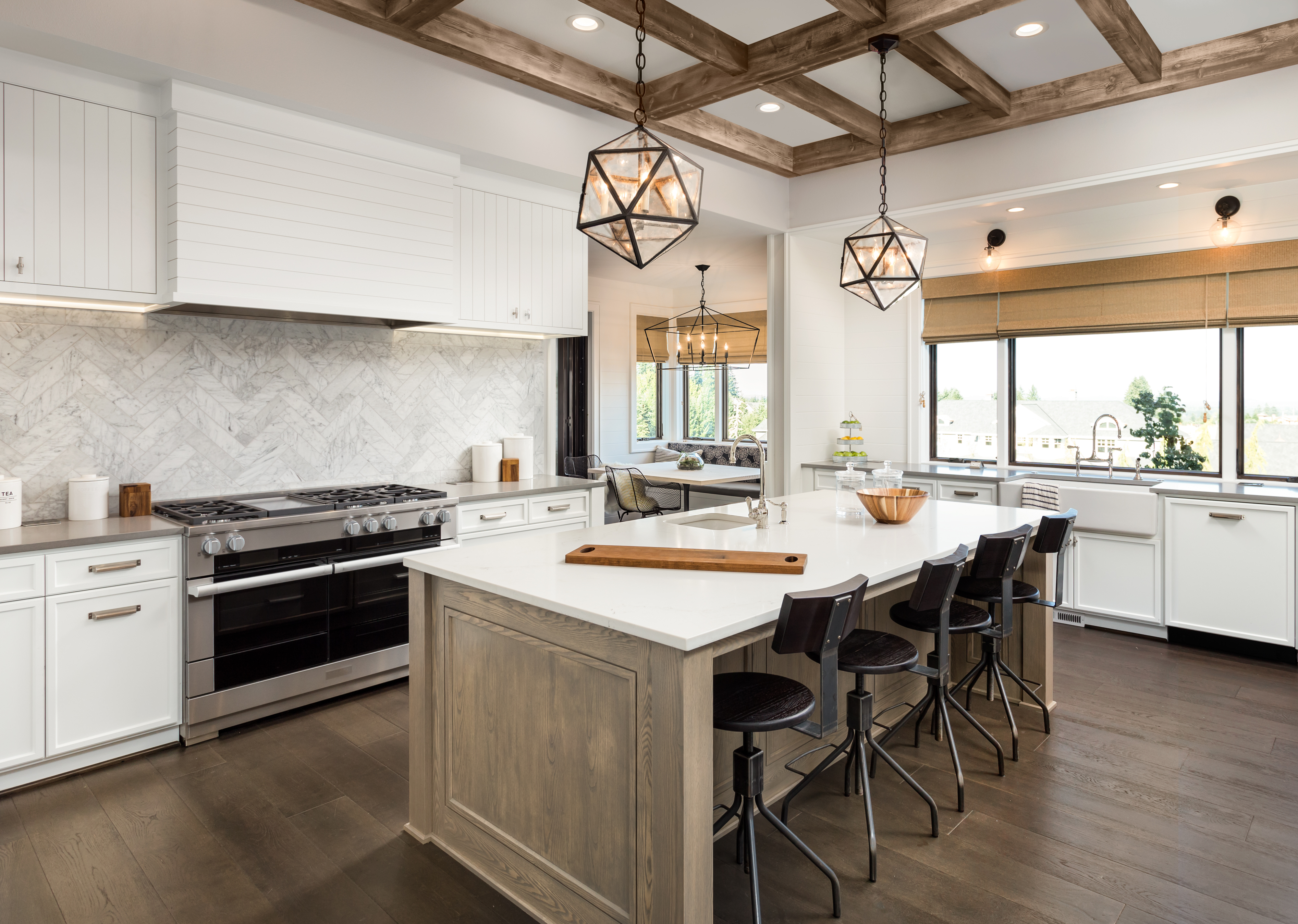
Built-in appliances
Built-in appliances are either completely or partially housed inside cupboards or units and their doors are usually fixed to the cupboard door, so they can be hidden from view. They integrate seamlessly with the rest of your kitchen.
Freestanding appliances
In contrast, freestanding appliances are not attached to kitchen units and are able to stand on their own. They are usually visible and can be placed anywhere that there is enough space.
Advantages and disadvantages
Now the terms are clearly defined, let’s look at some of the main advantages and drawbacks of both options.
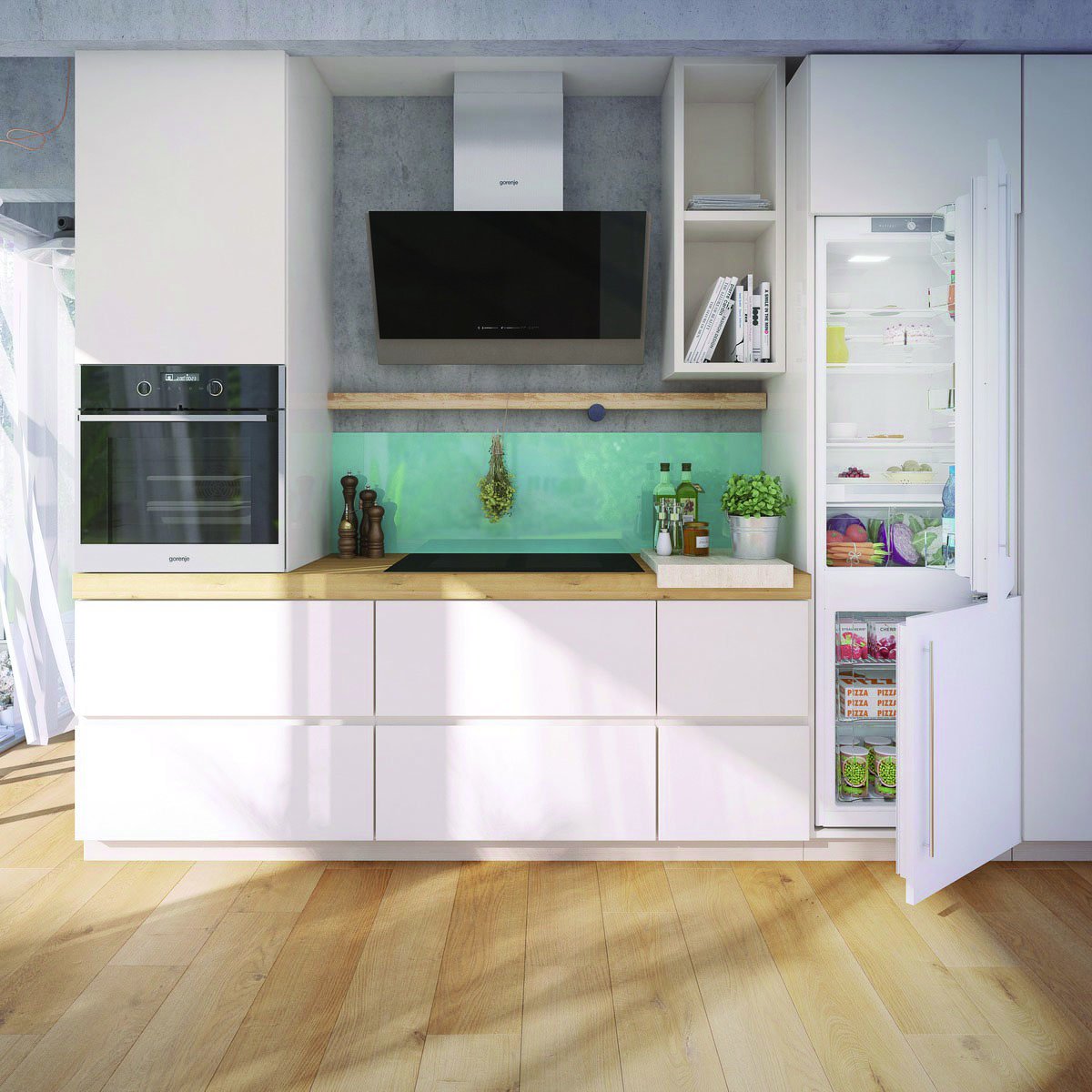
Built-in appliances
Advantages:
• The main advantage of built-in appliances is that they look great! Because If they’re concealed, they won’t disrupt the overall design of your kitchen but instead help to maintain a uniform, uncluttered aesthetic. And if you choose to partially display your appliance, this creates the popular minimalist, sleek look.
• They tend to be less noisy than their freestanding counterparts; cupboard doors help to minimise noise and they’re also held in place by the surrounding units, reducing the amount they can vibrate.
• They offer more options in terms of power sources; it’s easier to mix-and-match gas and electric in-built appliances, such as hobs and ovens, than it is freestanding options.
Disadvantages:
• In-built appliances are more difficult (so usually more expensive!) to install and repair than their freestanding counterparts.
• They’re also made by fewer brands, so tend to be more expensive and offer less choice.
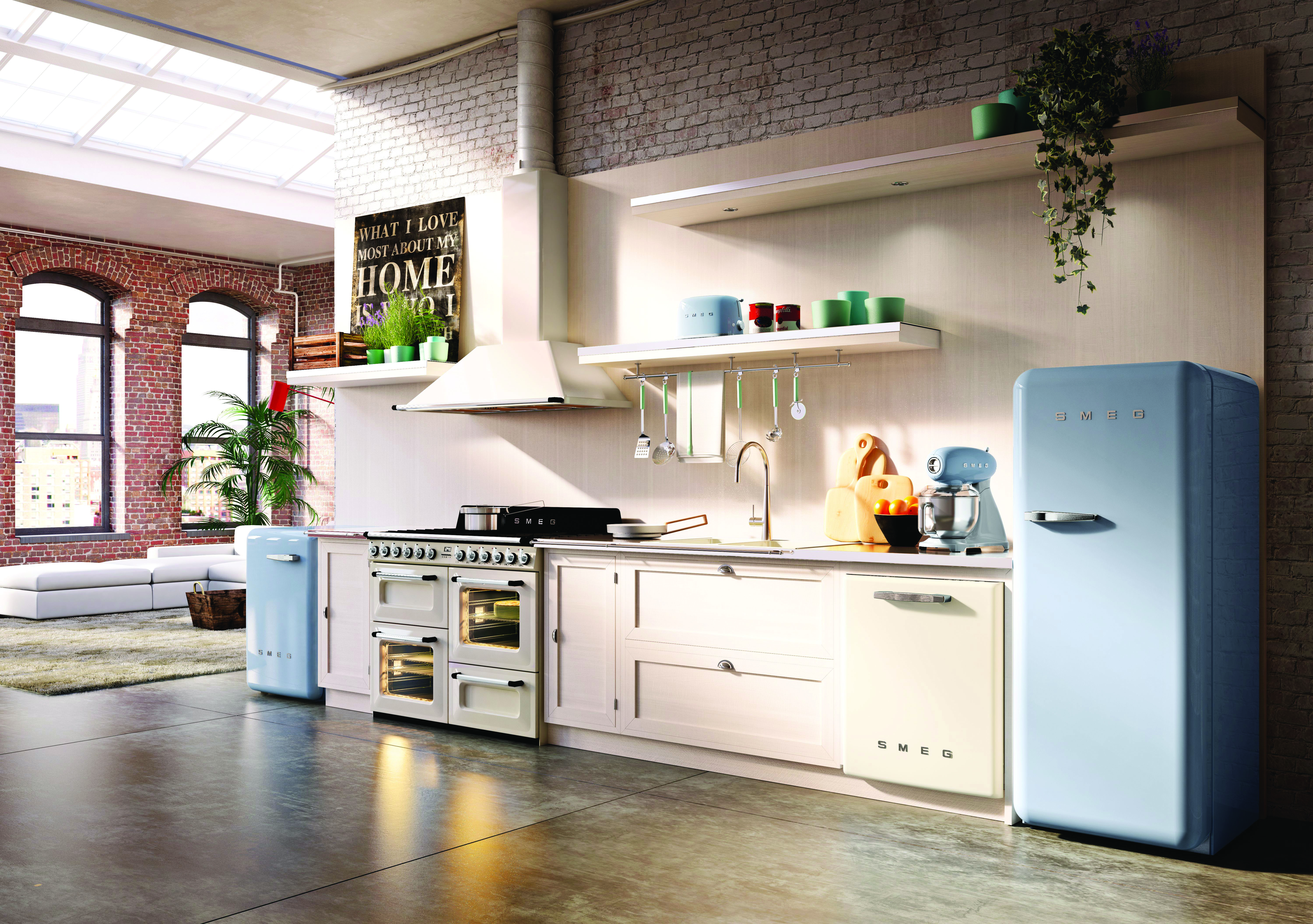
Freestanding Appliances
Advantages:
- Freestanding appliances tend to be less-expensive cheaper than built- in models and can usually be fitted by non-professionals. If your budget is tight’re looking to maximise your budget, they may be the better option for you.
- They also offer more flexibility in terms of where to place them, and whether to take them with you if you move house.
- They make a great feature in your kitchen, allowing you to add a pop of colour or elevate your chosen metallic finish in a fun and playful way.
- Finally, freestanding appliances offer far more variety than their built-in counterparts in terms of brand, range, colour, style and price-point.
Disadvantages:
- Freestanding appliances won’t match your cabinets and will always be visible. If a sleek, uniform look is a top priority for your kitchen, they may not be the right choice for you.
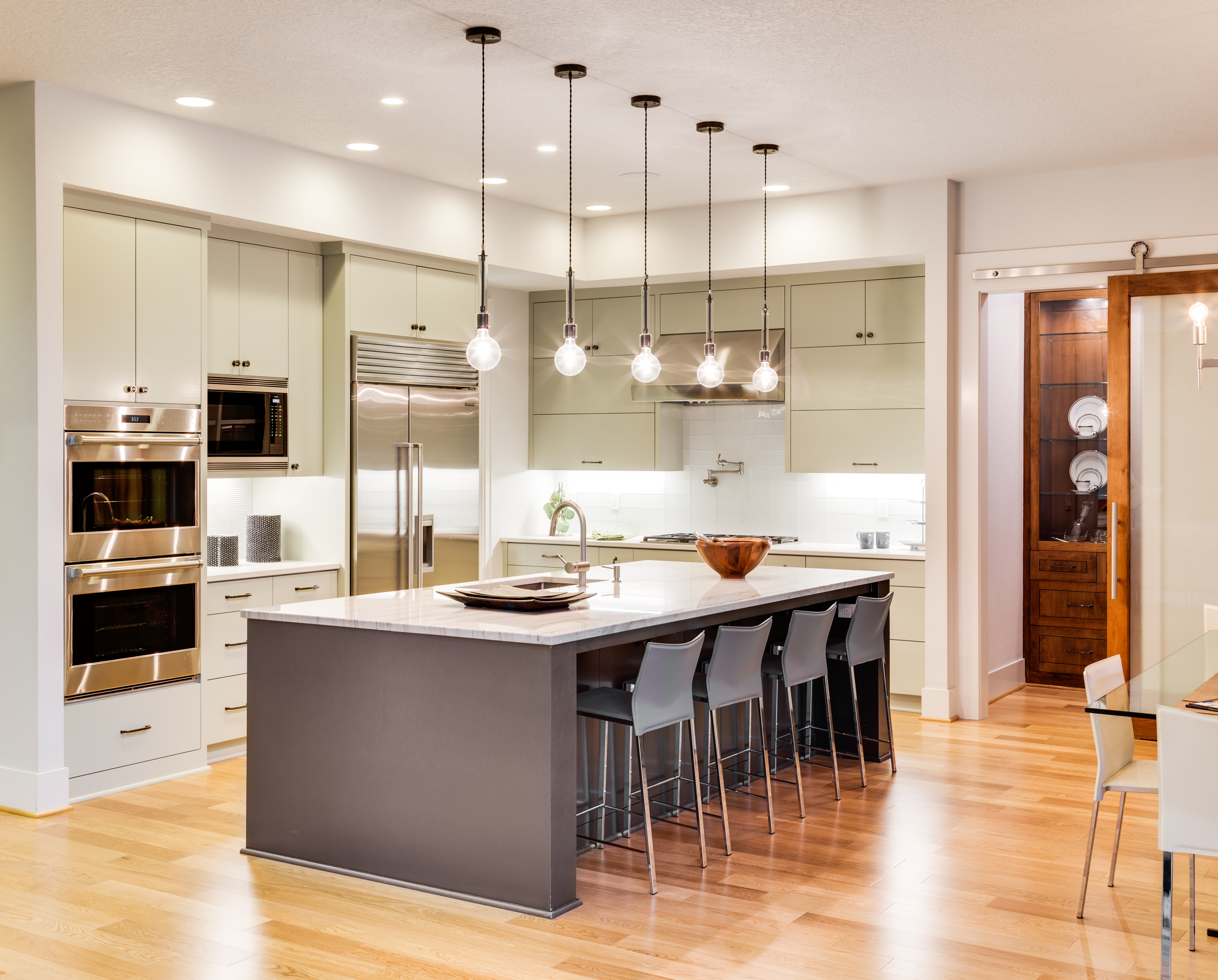
Things to consider before making your decision:
So, we’ve run through the pros and cons of each type. Now, let’s look at the questions you should be asking yourself before you make your final decision:
What’s my budget?
Probably Like so many things, your budget plays an important role in this decision process. The most important question when planning a new kitchen. Once you’ve come up with a figure, this should be the number one principle guiding all of your decision making. Appliances are available at a number of different price points, and often they are one area that a homeowner will choose to invest in. Style, quality and size are the biggest factors impacting the cost, so deciding if this is where you want to put your money is key. Typically, appliances can equate for 15-20% of your total project spend.
Keep in mind that built-in options are usually more expensive than freestanding ones so they’re likely to eat up a higher proportion of your budget.
What kind of look do I want my kitchen to have? Is an unbroken aesthetic essential?
If the unbroken aesthetic is essential to your kitchen vision, then going down the built-in route is the best option for you. It does mean you will likely have to allocate more of your budget to spend on appliances so it’s important to be sure that aesthetic value is enough of a priority for you to justify the extra spend. This is a popular choice for handle-less and European kitchens, whereas traditional and shaker style kitchens look great with both retro and American style refrigeration and range cookers.
If I move, do I want to be able to take my appliances with me?
Are you buying appliances you expect to last? Do you intend to stay put in your current home or could you see yourself moving in the next few years? If it’s a priority for you to have the flexibility to take your appliances with you when/if you move, freestanding options are a better bet.
How much choice of models, colours, features and sizes do you want to have?
Freestanding appliances will give you far more choice in all these areas.
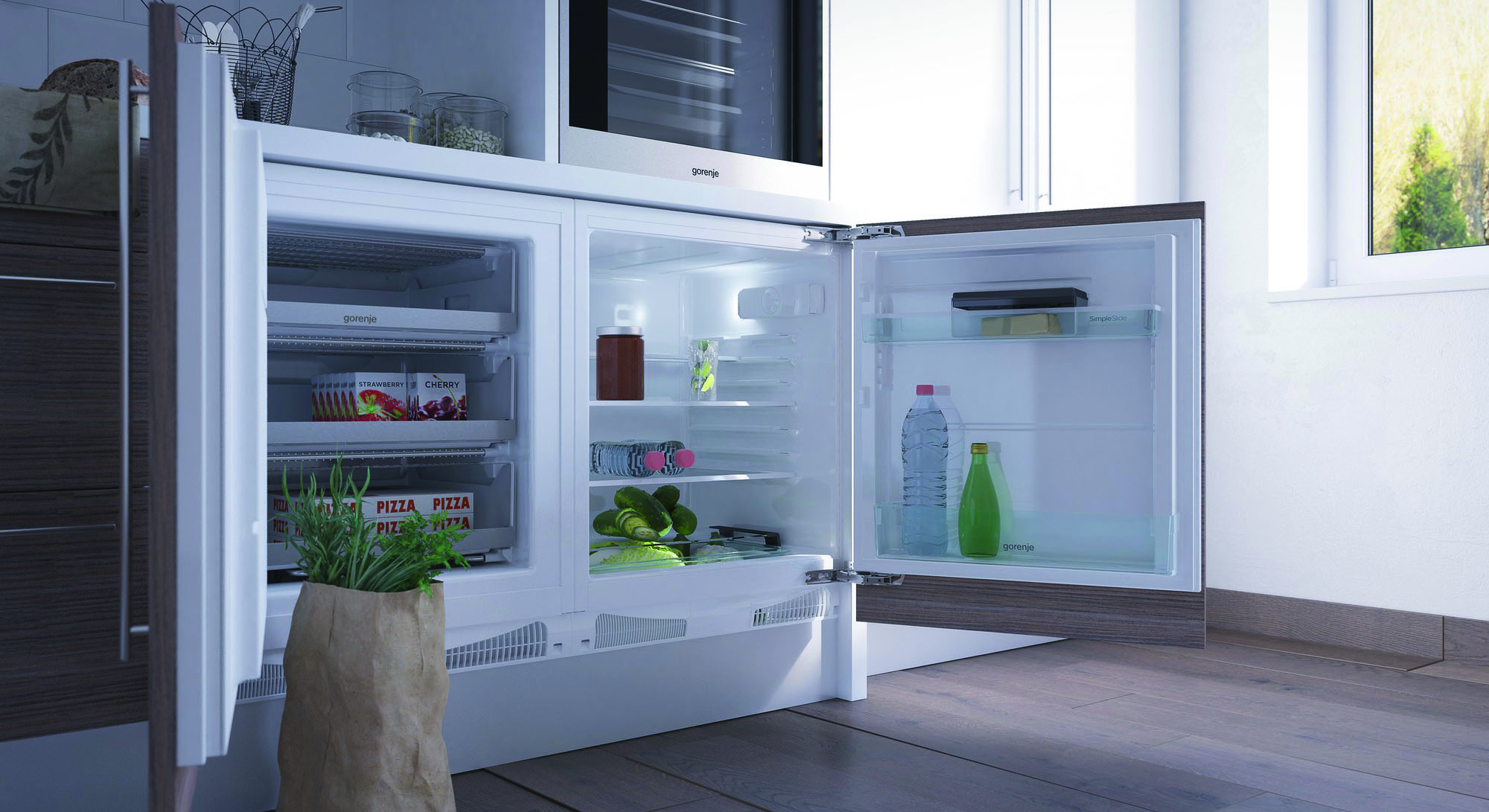
Are there any other options?
The third way: combining built-in and freestanding features
If your cupboards are large enough, it is possible to combine the best of both worlds by housing freestanding appliances in existing cupboards, allowing them to be concealed.
This can work well, but its effectiveness depends on a range of factors. Firstly, you’ll need a large space with enough room for clearance on all sides, to allow for manoeuvring and ventilation; additionally, it’s also important that your chosen location has adequate access to the right power or utility source.
This method can potentially be a cheaper alternative to the built-in route and create a similarly sleek aesthetic, but it may not work for all appliances. Fridges and freezers, for example, tend to need more ventilation than other appliances so this may not be suitable for them.
You can also consider combining built-in and freestanding options across your appliances suite – perhaps you prefer the size and flexibility of a large freestanding American fridge-freezer, but prefer the efficiency and aesthetic of built-in hobs and ovens. The trick with this method is choosing an accent or material, and linking your appliances together coherently with this common theme.

